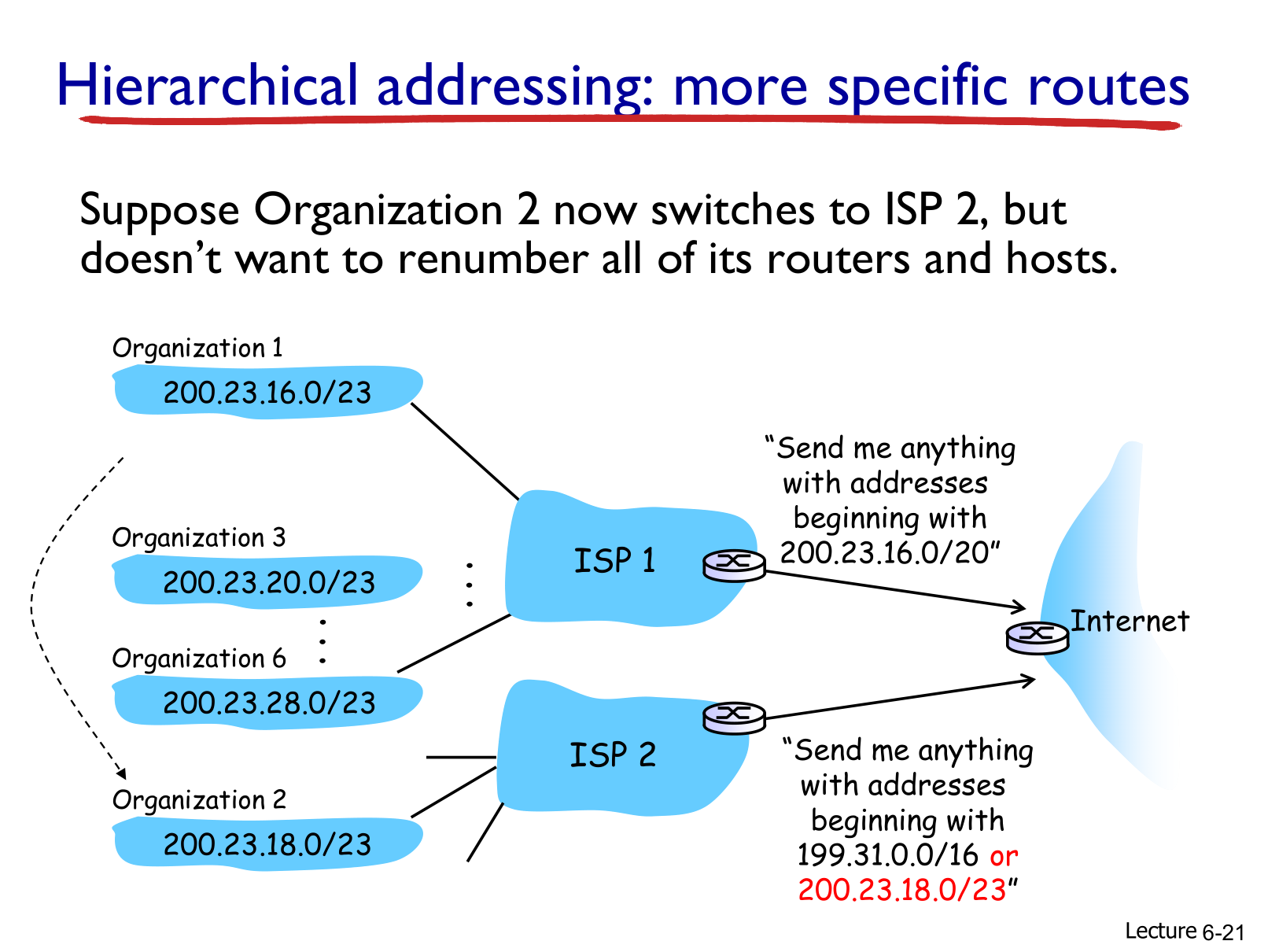
Forwarding: moving data from router A’s output to next router B’s input.
Routing: determining entire route of routers from source to destination.
Local forwarding table: Key = Destination address in header; Value = Output link. (Generated by routing algorithm)
Data plane: Local, per router logic, forwarding function
Control plane: network-wide logic, routing algorithms
Routing: Path selection (RIP, OSPF, BGP)
IP Protocol: Addressing conventions, datagram format, packet handling
ICMP Protocol: Error reporting, Router “signalling”
An interface = connection between host/router and a physical link.
Typically a router has multiple interfaces (despite being only 1 device).
An interface can have more than one IP address associated with it (that’s why network layer connections don’t use MAC addresses!)
Group of “directly” interconnected hosts: can reach each other without crossing a router.
Same network prefix within a subnet.
CIDR (Classless InterDomain Routing): IP address format in 32-bit (4x 8-bit) a.b.c.d/x [x = the number of bits in subnet]
Subnet mask: set all first x bits to 1, last 32-x bits to 0. Bitwise AND of the mask with an IP gives us which subnet.
Getting IP address:
After obtaining a larger block from ISP, can split into contiguous blocks of $2^k$ addresses for integer $k$.
Hierarchical addressing: longest prefix matching
If organization is transferred from one ISP to another, its block is transferred to the new ISP.
Packets are matched with the longest prefix.

Dynamic Host Configuration Protocol: dynamically obtains an IP address from server.
DHCP runs over UDP